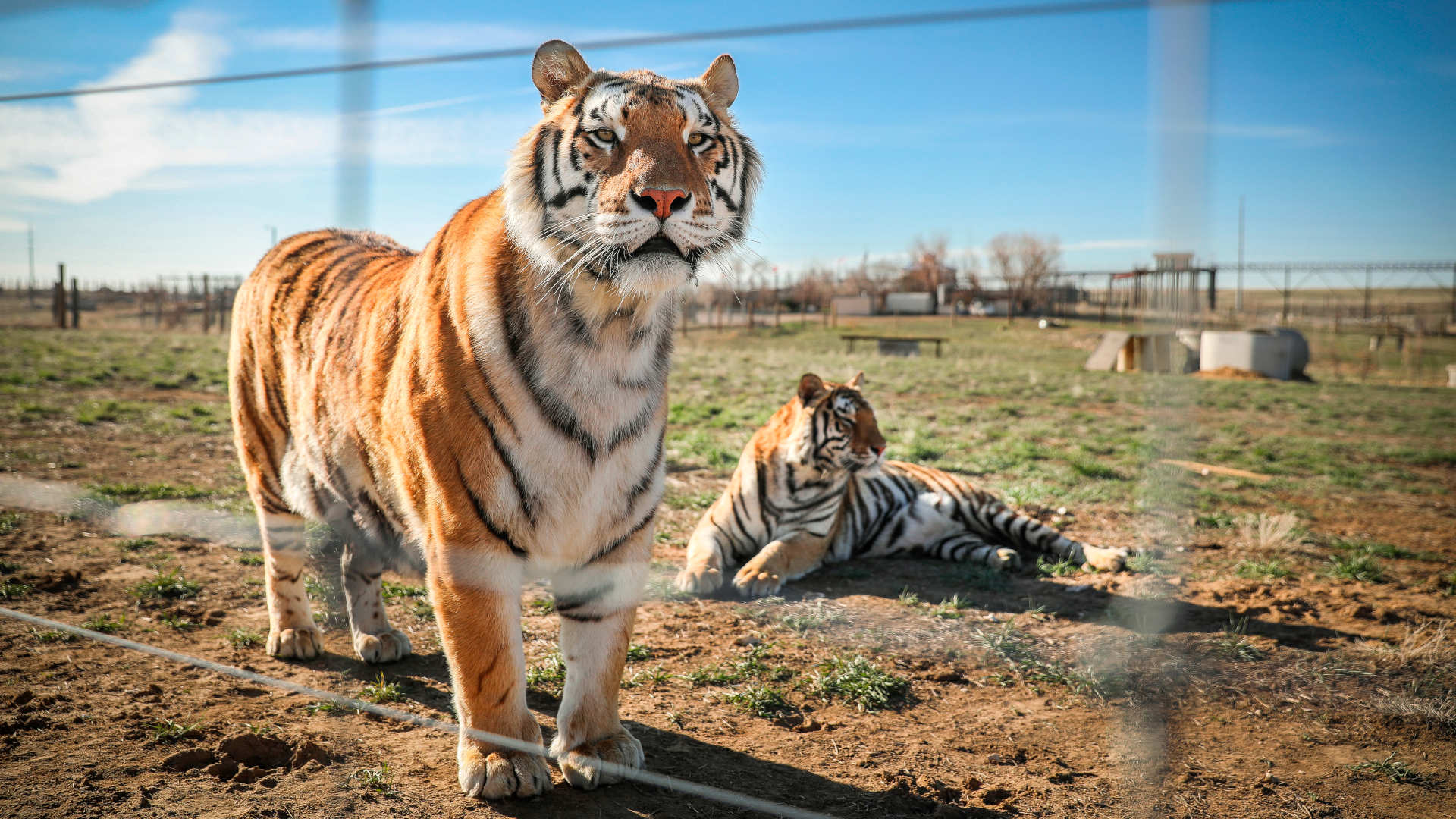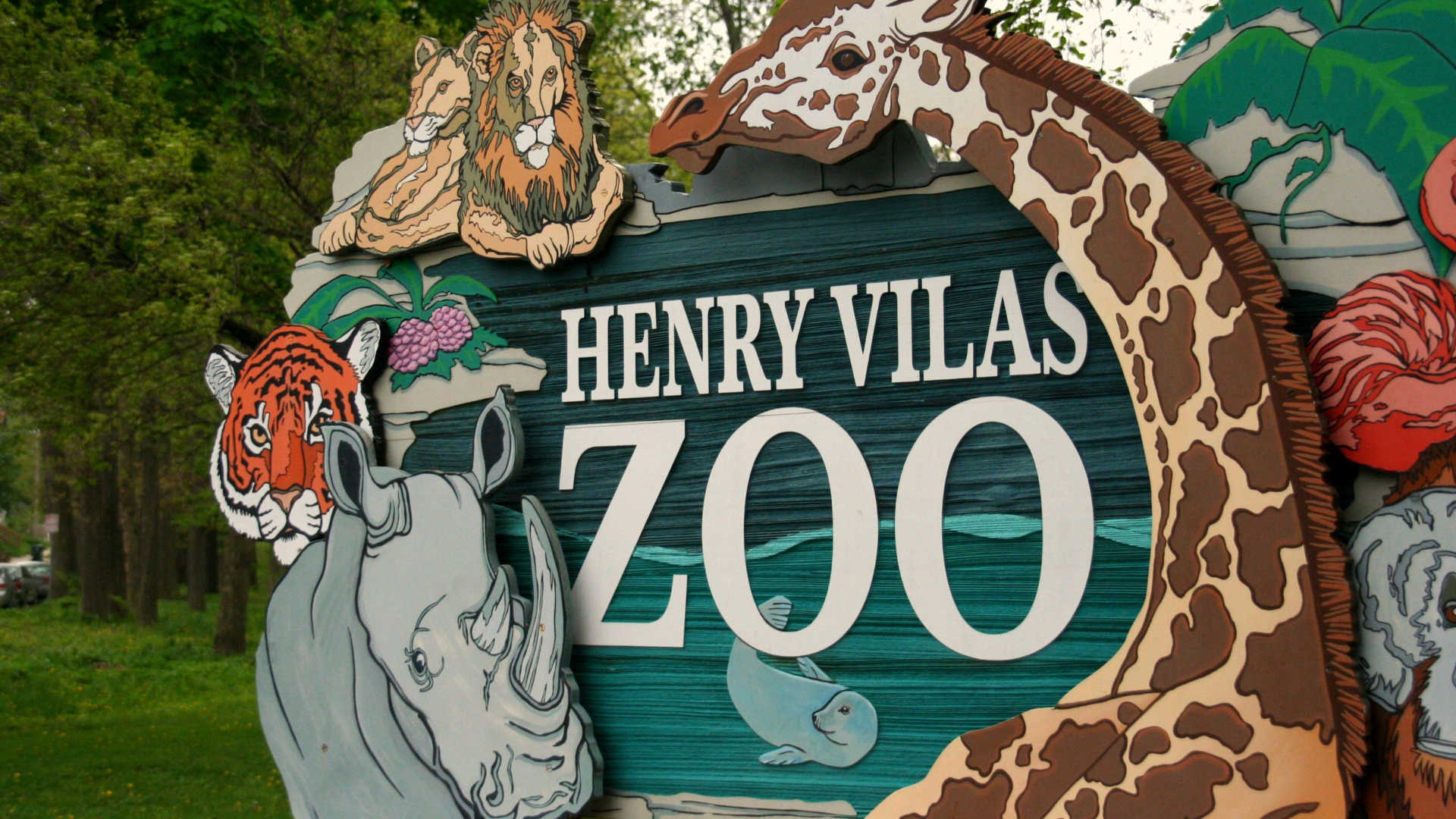Are 20,000 Big Cats Caged in the U.S.? Highly Unlikely.
The sheriffs issued a stark warning: At any moment, any one of the tens of thousands of big cats held in dilapidated enclosures across the United States could escape. The cats, kept as domestic pets and viewed by law enforcement as largely unregulated, had already maimed and killed more than 750 people since 1990. During one infamous incident in Ohio, dubbed the Zanesville massacre, police slaughtered close to 50 zoo animals, including 18 tigers and 17 lions. Some officials in law enforcement, as the attorney Carney Anne Nasser put it in an interview with Undark, “said they would rather diffuse explosive devices than work with big cats.”
These claims about public safety, advanced by the National Sheriffs’ Association and many others in recent years, urged lawmakers to pass federal legislation. In 2022, the push ultimately culminated with the Big Cat Public Safety Act. The bill did one thing everyone can agree upon: It repeated a big claim and, indeed, invoked a rather fundamental figure in the bid for more regulation: “An estimated 20,000 big cats, including tigers, lions, jaguars, leopards, cougars, and hybrids, are currently kept in private ownership in the United States.”
Prior to the legislation, the 20,000 figure had cropped up in many places. It came up during legislative hearings and among law enforcement. Nasser’s law review, “Welcome to the Jungle,” put the total just for tigers at “as many as 15,000.” Such figures, and estimates like them, have even led researchers, organizations such as the World Wide Fund for Nature, and investigative journalists to note there appeared to be more pet tigers in the U.S. than tigers in the wild.
Certainly, the confinement of big cats creates issues involving both animal rights and animal welfare. But, for some advocates, the longstanding narrative surrounding big cats in the U.S. bore the hallmarks of a manufactured crisis, chief among them an exaggeration of the facts, an emotional backstory, felonious scapegoats, polarizing rhetoric, and ulterior motives. The frenzy only fed in 2020 as more than 34 million viewers binged the documentary-style Netflix series “Tiger King,” which featured eccentric big cat owners, true-crime twists, and ultimately the broader cultural debate about animal welfare and the ethics of private zoos.
Under the 2022 law, the U.S. Fish and Wildlife Service, the agency charged with its enforcement, required private owners to register their big cats. In 2024, registration data — provided to Undark through a Freedom of Information Act request — suggests that there are far fewer big cats than cited by lawmakers and advocates alike. Some advocates suspect that the legislation, and those pushing for its passage, grossly exaggerated the number of big cats in an effort to do away with captive animals altogether.
“When you get a big number, it shocks people, and you use the big number to push forward whatever it is you’re pushing forward.”
In fact, the Big Cat Public Safety Act, which the Congressional Budget Office estimated would cost $3 million to implement between 2022 and 2027, focused on tens of thousands of animals that almost certainly do not exist.
The law also appears to have led to unintended consequences, which sanctuaries and accredited facilities are just now beginning to comprehend. Mindy Stinner, the president of the Feline Conservation Foundation, argues, for instance, that the interim rules enacted under the law make it impossible to provide animal welfare in many situations.
In turn, she said, these issues of caring for wild animals in captivity strike at the heart of a much larger debate. “I think we all agree that any animal that is being cared for by people deserves the best of care and should not be abused, should not be a lot of things,” Stinner said. “But I think we differ on whether we should have those animals at all, and, by ‘we,’ I mean humans. Should we be taking care of these animals at all or should we be simply protecting them in the wild?”
According to public records released by the U.S. Fish and Wildlife Service, as few as 97 big cats appear to be privately held across the country. But the agency acknowledged that the accuracy of that number is unclear. Christina M. Meister, a public affairs officer, confirmed by email that, under a component of the law that requires big cat owners to register, “approximately 100 animals have been registered.”
It’s possible that many other cats remain unregistered. The PETA Foundation, which provides administrative and legal support to the nonprofit People for the Ethical Treatment of Animals, estimates that another 1,800 or so animals likely live in unaccredited roadside zoos or with traveling exhibitors, and 1,360 live in facilities accredited by Association of Zoos and Aquariums and Global Federation of Animal Sanctuaries, bringing the total number of big cats in captivity in the U.S. to roughly 3,200.
Whatever the true number, nearly everyone in the debate acknowledges a disparity between the actual census and the figures cited by lawmakers. “The 20,000 number is not real,” said Bill Nimmo, founder of Tigers in America. His organization prefers to focus on the number of facilities, which, he said, declined 39 percent since 2011, going from an estimated 502 to 305 facilities today.
“There is no crisis,” Stinner said. “It’s all a fabrication.”

Stinner contends the federal agency nonetheless had to build a registration process and figure out a process for privately owned big cats that do not appear to exist. In response to a list of emailed questions, the FWS did not directly address this allegation. (According to news reports, federal authorities have made arrests under the new law in Texas.)
It’s one thing to exaggerate. But, as Stinner saw it, the hyperbole was not merely academic. Nor was it merely an instance of poor citation practice. The difference between the 20,000 cited in the law and the actual numbers of big cats in captivity confirmed her organization’s longstanding hunch. Indeed, the Feline Conservation Foundation estimated a total of 2,330 tigers nationwide in 2016, and funded a 2021 paper, one of the few published sources, which put the total number “of federally regulated big cats” at 4,103. (The author of that paper, Rachel Garner, has previously been contracted as a fact-checker for Undark. Her research was an independent effort.)
Still, advocates have continued to cite the 20,000 figure. “When you get a big number, it shocks people, and you use the big number to push forward whatever it is you’re pushing forward. It doesn’t matter whether it’s a law or a fundraising campaign,” Stinner said. “Either way, you want impact, and if you’re doing that, then you are not educating the public and sharing real information.”
“There is no crisis. It’s all a fabrication.”
Garner, the independent researcher, said that another side effect of the law is that it facilitates the broader shift of captive animals from private owners or individually owned facilities to sanctuaries, some of which fundraised off of “Tiger King.” And the legislation didn’t exactly do much in the way of solving global problems, she said: “The intent of this bill — to end cub petting and to get rid of private ownership of big cats in the United States — is fine and good.” But because it impacts both conservation breeding populations of critically endangered species, and the day-to-day care of captive animals in ethical situations, “that legislation needs to be written with precision so that it does not accidentally create situations it did not intend.”
The overwhelming emphasis on abuse and the bad actors who exploited animals, Garner said, meant that “not a lot of attention was paid to where the language might have been overly broad or imprecise in a way that could impact ethical captive management of these animals.”
Several organizations and advocates contend that the 20,000 figure has always been, at best, an estimate, and stress that the registration data does not necessarily capture all the big cats kept by private individuals. As Nasser put it, “It’s like asking sex offenders to voluntarily register, you know, like, without us knowing that they’re sex offenders.” In an email, Catherine Doyle, who is affiliated with the Performing Animal Welfare Society, said, “I am not aware of individuals who failed to register their cats, although we know they’re out there.”
Michelle Sinnott, director and counsel for captive animal law enforcement at the PETA Foundation, emphasized that the law accomplished what it was set out to do.
“The law was never drafted to address everything that’s wrong with keeping big cats in private ownership,” she said. “It was directed at big cat cub petting, stopping breeding, and preventing future private ownership of big cats. Don’t get me wrong, you know, one big cat in a private home or in a roadside zoo is — that’s one too many.”
“Not a lot of attention was paid to where the language might have been overly broad or imprecise in a way that could impact ethical captive management of these animals.”
Specific numbers are not what really matter, she said: “Whether there’s one big cat in a private home or whether there’s 10,000 big cats in a private home, the underlying problem of industry is still there.”
For his part, Nimmo at Tigers in America sees the exaggerated figure as part of the political process. Prior to the passage of the bill, he said, businesses that exhibited and bred big cats juiced the numbers, too. While he saw “roadsides” in unflattering light — the kinds of places that let people throw rocks at tigers, feed them rotten chicken, or take selfies with cubs — the industry had its champions. As part of the federal legislative process, the Congressional Budget Office, which provides lawmakers with preliminary financial effects of proposed legislation, sought an estimated tally of the costs associated with shutting down these operations.
“The bad guys said, ‘If you pass this law, I’m not kidding, it’s going to cost the industry $4.2 billion,’” Nimmo said. “Because we’re pretty well plugged in,” he said, the office also contacted him to ask, “‘Can you tell me what, can you give us your set of numbers?’” Nimmo’s organization calculated the losses closer to $80 million — two orders of magnitude less. (A Congressional Budget Office report attributes these to reduced income among the “30 exhibitors and 150 privately owned facilities” that offer physical contact with big cats.)
“I’m not justifying the hyperbolic 20,000,” Nimmo said. “In the world of comparing hyperbole, the good guys won this one.”
The question remains, though, whether the law and all the exaggerated threats to public safety that facilitated its passage on Capitol Hill came with unintended complications. Stinner suggests the collateral consequences involve practical day-to-day care and feeding, some of which was done by unpaid volunteers at accredited facilities that care for big cats. She heard one hypothetical where a facility may need a dentist. In banning public contact, the law appeared to prohibit any physical contact between big cats and anyone except for vets and those who meet certain training requirements. (In big cat care, such work is occasionally done by dentists who are trained on humans, not animals.) “The dentist isn’t a veterinarian,” she said. “Is that legal? They don’t know, but they’re doing it anyway because it’s an animal welfare issue. So these kind of things become very, very challenging questions, and part of it has to do with the intent of Congress and the interpretation of the regulations by U.S. Fish and Wildlife.”
Similarly, Garner invoked another scenario: In 2020, the Alexandria Zoological Park, in central Louisiana, got hit by a hurricane, and the zoo community came together, deciding it was better — in terms of animal welfare — to transport cougars elsewhere to a habitat to live in, rather than keep them behind the scenes for the duration of the repair. Lawmakers seemingly ignored concerns embedded in these types of scenarios. “So, in a disaster situation,” she said, “facilities may no longer be able to lend each other professional aid without having to do a lot of paperwork, which is obviously not practical in the middle of a disaster, because otherwise, it will not be legal for someone who has worked with tigers for 20 years elsewhere to help load a tiger into a crate at a different facility.”

Dale Anderson, a former pilot and executive director at Project Survival’s Cat Haven in California, a nonprofit education and conservation facility, said he could once turn to the Federal Aviation Administration for clear guidance on flying, and even if he didn’t like their opinion at least he knew what it was. Whereas, he said, when he was trying to figure out how non-veterinary staff should be interacting with wildlife while staying within the law, the contacts at the FWS advised him to consult his own attorneys. In a case, for instance, where a good Samaritan has found an orphaned feline, he said: “People go out and get the mountain lion, they bring it to someplace and you have to work on it. Well, is that covered under this stuff? You know, nobody knows.”
Whatever the new law accomplished, some conservation advocates were quick to highlight other alleged issues. The Big Cat Sanctuary Alliance, for example, lauded the protections for big cats, but claimed, “the U.S has a growing small cat crisis, too.”
Stinner said she now found herself wondering if the fear mongering and fundraising undermined what advocates ultimately had set out to support: the animals themselves. Already one flashy but largely fake crisis had detracted from the very real and incredibly nuanced issues around animal welfare issues and the conservation of critically imperiled animals. “You know, 10,000, 20,000 tigers in backyards across the U.S. That’s eye-catching.” As is often the case, she said, the actual figures were more complicated, less sensational, and difficult to discern over the din. “The truth is hard. It’s hard to market.”












Comments are automatically closed one year after article publication. Archived comments are below.
This is such unusual journalism today, such well-researched and well-thought out reporting, it’s almost shocking to see.